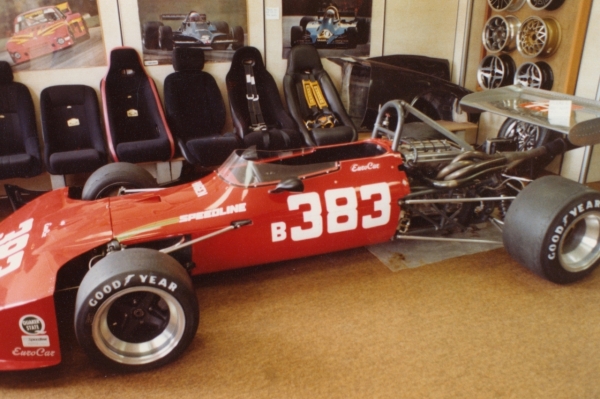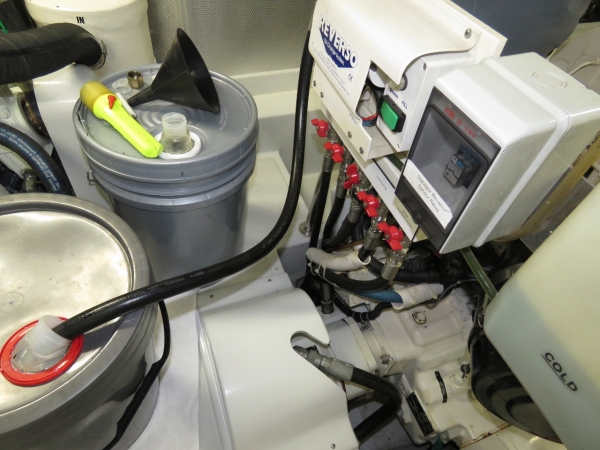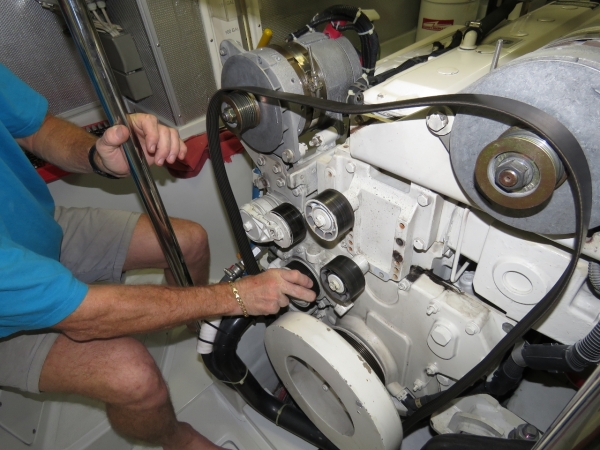Oil analysis is one of these practices where many people I know find it valuable and send their oil out for analysis on every oil change. We don’t on Dirona not because we don’t believe in it but more from a perspective that the hassle/cost-to-value equation isn’t sufficiently compelling for our usage.
When I raced cars, we were sponsored by Quaker State and they supplied oil and weekly oil analysis for us. One season, we were pushing the engine too hard and blew up seven engines in an eleven-race season but most years we had pretty good mechanical longevity. Oil analysis, although always interesting and sometimes educational, didn’t help us avoid any of these engine failures.
As an auto mechanic working on exotic cars back in the 80s, some customers chose to do regular oil analysis since some of their cars were old, rare, and expensive to service. Frequently customers would get into a panic about a slight increase of some trace substance detected by the analysis. This led to lots of money spent on diagnosis, nothing was found, and the problem always self-corrected or was left in a “watch it” state. I didn’t get a chance to see it save any customer money and there were many cases where it clearly brought a cost without obviously changing the engine expected lifetime.
In the marine world, we have operated 2 Cummins engines for 4,100 hours and the current Deere engine for 8,100 hours. That’s 16,300 hours without any faults. I could have done oil analysis the entire time but it would have required sending oil in 65 times often from distant countries where shipping is a challenge and quite expensive. Arguably it doesn’t hurt, but I’m not sure the trouble and false alarms would have been worth it.
I have many friends that do oil analysis on their marine engines and there are far more stories about readings that raise concern but were later determine to be “fine” or not directly actionable than there are about oil analysis results ending up saving an engine. In the brokerage business, I’ve heard about oil analysis scuttling a sale where there is no other evidence of engine problem. On these it’s hard to know if the problem was real or not but, based upon the other experience above, I suspect that many if not most were not.
Overall, oil analysis is data and more data is almost always good. But I’ve had some experience with engine failures that were not predicted by oil analysis and, on the other hand, over 16,000 hours without problems that oil analysis could have helped. So, I’m personally not 100% convinced that the hassle-to-reward ratio makes oil analysis worth doing when operating a fleet of one. In large fleets where significant savings can be achieved by pushing longer oil change intervals, I could see oil analysis paying for itself.
There is always more you can be doing for engine longevity on some dimension. And it is possible that next week, we may suffer a catastrophic engine fault on Dirona where oil analysis might have helped. The approach we take is to instead spend our time on things we can do to catch unexpected failure early believing that, on recreational marine engines, “wearing out” isn’t a common failure mode. What kills them early is poor maintenance, long periods of inactivity, and part failures that aren’t noticed and end up cascading into more serious problems. For example, we take off the accessory drive belt and check the drive bearings frequently, believing that a bit more time spent catching this sort of issue has a better chance of giving us actionable results than knowing that the trace copper levels are slightly elevated on the last oil change. Another under-respected diagnostic tool is to spend some time near a running engine and learn how it smells, sounds, feels, and how hot various components normally are. I’m a huge fan of technology but it’s surprising how frequently just spending a bit of time observing has saved us from more expensive repairs throughout the boat.



One of the comments I always make about doing tests, is what are you going to do with the knowledge you now have? Ok, so your last oil change showed elevated levels of some metal, are you going to bring in a mechanic to do an engine tear down looking for the part? What if you can’t find the source, then what?
There are a few fault modes that are actionable like water or coolant in the oil but, generally, I agree. Knowing something only has value if you intend to act upon the knowledge. When I raced cars we did weekly oil tests and I’ve seen good tests prior to engine failures and I’ve seen bad tests on engines that were able to race the rest of the season.
Your point is the important one. If you are willing to open the engine on a suspicious oil test, then it may be worth doing. If you aren’t willing to act on the results, the testing isn’t going to solve any problems.
Interesting post James. I thought with today’s modern formulations, outside of special needs like racing, engine oils were designed to handle most of the conditions and loads we’d put engines through.
Stewart, you are right. Modern engine oils are able to handle any normal operating condition and, in fact, worn out bearing and other oil and oil contamination related engine failures are becoming rare. Oil analysis is used in two broad ways:
1) fleet operators use it to monitor to state of the oil additive packages and, rather than change oil on a scheduled interval, only change it when the oil is starting to show additive package breakdown and excess acid build up. This is very economic when operating a large fleet especially a fleet of engines with large oil pan capacities where the oil analysis is delaying the change of 10s of gallons of oil.
2) The second way oil analysis is used it to look for possible engine fault by looking detecting higher than normal levels of trace elements. Almost anything that wears excessively, rusts, or otherwise breaks down inside an engine will cause changes in the trace elements carried by the oil. The bigger pieces are filtered out but trace elements often remain.
It’s the latter use case that most recreational boaters use oil analysis. Using it for the first case, that of extending oil change intervals, is hard to get to make economic sense when you have one small engine that doesn’t hold much oil and may be in exotic places all over the world. It’s cheaper and faster to just change the oil. For fleet operators with large numbers of engines with very large oil capacity all in the same region (e.g. mining equipment), oil analysis can save substantial amounts. If I could run the tests on board quickly and economically rather than having to send the oil in, I would be interested in this use case. When I was racing, we always changed the oil between races so were only interested in the second use case, detecting faults early, and we didn’t experience cost saving gains or engines saved by analysis so I focus on other means that appear to deliver more bang for the buck and effort.
What are your thoughts about the value of investing in a thermal camera to better monitor for hot spots, as well as possible other uses for watch standing and external monitoring? With the recent price decreases they are becoming MUCH more affordable.
We have an IR heat sensor but not a thermal imager on Dirona. We use thermal imaging to find electrical connection problems in data centers are they are very effective for this. Even the IR heat gun does OK in this usage mode.
Thermal imaging will quickly show an under performing cylinder and many other engine issues but an IR heat gun can do many of these tasks. Thermal imaging is way better than IR temp sensors but more expensive. As prices fall, I’m certain I’ll eventually get one.
I’ve thought on occasion there must be a market for RFID temp sensors designed for engine rooms and the like. Sense all the things!
Jamie, I agree with you “sense all things” approach. It’s getting cheaper and cheaper to monitor and, as the price falls, I find us monitoring more and more on Dirona. Using your example of temperature sensors, we monitor the laz temp, the engine room temp, the start alternator temp, the house alternator temp, the fuel temp, the transmission temp, the hydraulic oil temp, and the hot water heater temp. We have alarms on out of bounds and show warning lights when the temps start to leave normal bounds. It’s a great way to detect a problem or increase the longevity of equipment. For example, marine alternator live a tough life running in a hot engine room. I’ve seen them up over 300F which is really tough on the bearings and on alternator mounted electrical components. The more you know and automatically monitor, the less likely you are to experience surprise early failures.